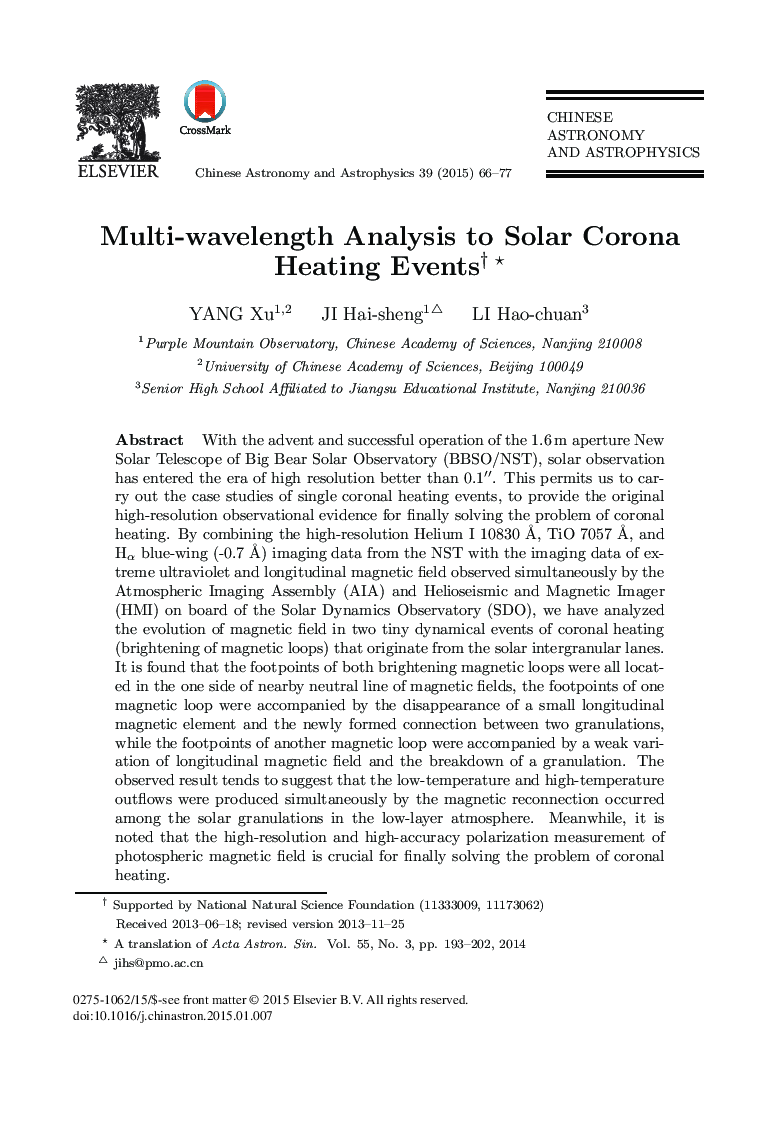| Article ID | Journal | Published Year | Pages | File Type |
|---|---|---|---|---|
| 1771736 | Chinese Astronomy and Astrophysics | 2015 | 12 Pages |
With the advent and successful operation of the 1.6 m aperture New Solar Telescope of Big Bear Solar Observatory (BBSO/NST), solar observation has entered the era of high resolution better than 0.1”. This permits us to carry out the case studies of single coronal heating events, to provide the original high-resolution observational evidence for finally solving the problem of coronal heating. By combining the high-resolution Helium I 10830 Å, TiO 7057 Å, and Ha blue-wing (-0.7 Å) imaging data from the NST with the imaging data of extreme ultraviolet and longitudinal magnetic field observed simultaneously by the Atmospheric Imaging Assembly (AIA) and Helioseismic and Magnetic Imager (HMI) on board of the Solar Dynamics Observatory (SDO), we have analyzed the evolution of magnetic field in two tiny dynamical events of coronal heating (brightening of magnetic loops) that originate from the solar intergranular lanes. It is found that the footpoints of both brightening magnetic loops were all located in the one side of nearby neutral line of magnetic fields, the footpoints of one magnetic loop were accompanied by the disappearance of a small longitudinal magnetic element and the newly formed connection between two granulations, while the footpoints of another magnetic loop were accompanied by a weak variation of longitudinal magnetic field and the breakdown of a granulation. The observed result tends to suggest that the low-temperature and high-temperature outflows were produced simultaneously by the magnetic reconnection occurred among the solar granulations in the low-layer atmosphere. Meanwhile, it is noted that the high-resolution and high-accuracy polarization measurement of photospheric magnetic field is crucial for finally solving the problem of coronal heating.
